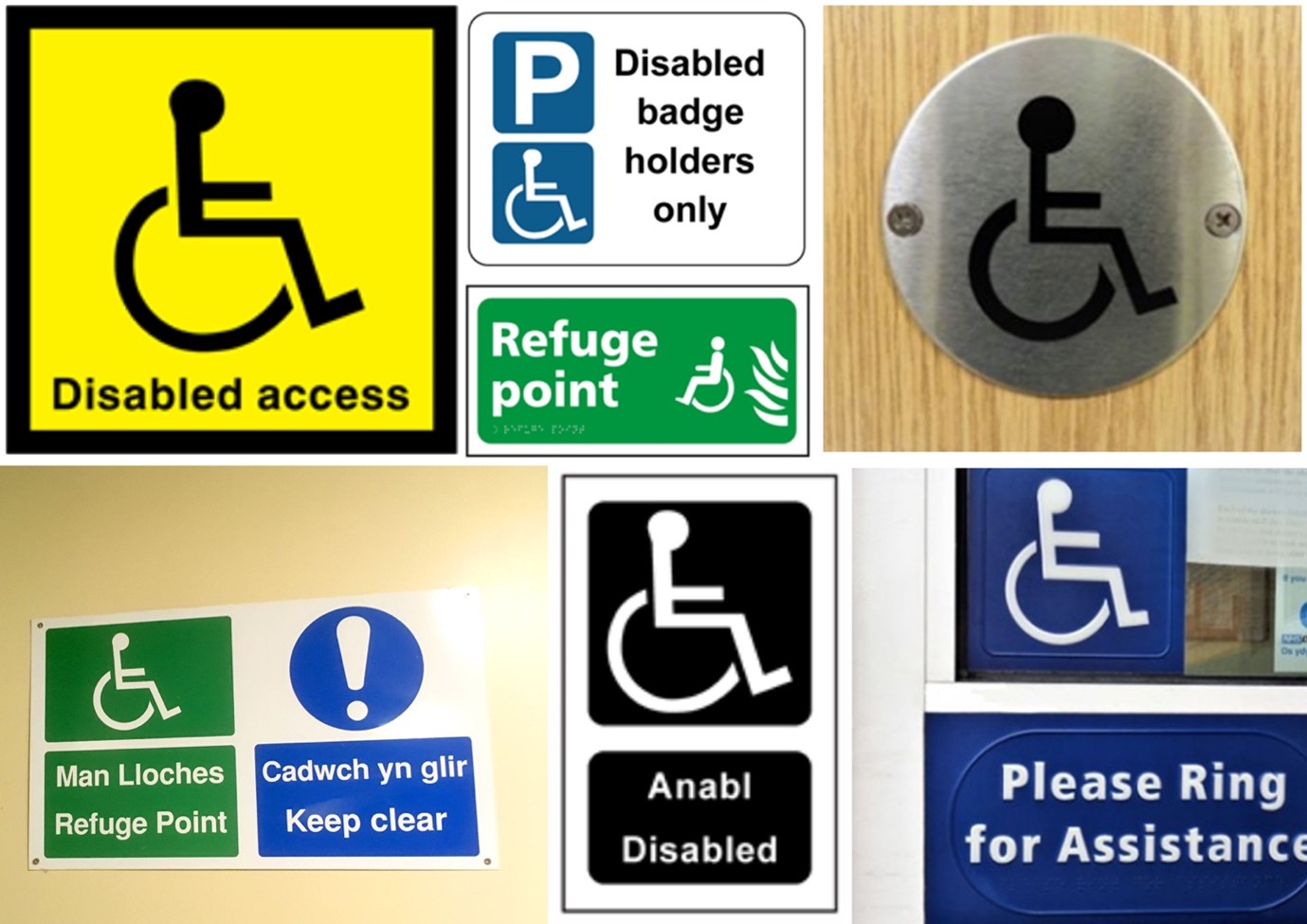
Disabled guidance safety signs are commonplace, but do you know the law surrounding them? Under The Equality Act 2010, certain businesses and all public spaces need to have disability signs.
However, despite disability visibility improving in recent years, businesses are still being caught out by the law. Employers still fail to make “reasonable adjustments” for employees and customers, which, in 2020, is unacceptable.
Below, we discuss how The Equality Act could affect you, what to do should you need disability signs and how you can make sure you meet the UK’s disability rights.
What Does The Equality Act Say?
The Equality Act is a lengthy and complex piece of legislation. It covers every form of discrimination, delving into the definitions and how to prevent it.
In terms of disabilities, The Equality Act does the following:
- Defines a disability as a physical or mental impairment that has acute or long-term effects on a person’s ability to do daily activities.
- Demands that businesses and public spaces make “reasonable adjustments” for both employees and customers, including enabling disabled workers to have the same access to everything as a non-disabled worker, where possible.
This has far-reaching effects, but in the case of disabled signs, it simply means employers are responsible for providing signage as a “reasonable adjustment”. This applies to everything from signposting toilets to ensuring safety escape routes are visible for disabled persons.
Of course, an employer’s duty doesn’t just stop at signs. Instead, effective signage should complement existing adjustments. Examples of reasonable adjustments include:
- Providing ramps or lifts.
- Making doorways wider, with automatic doors where possible.
- Have disabled toilets with inclusive signage.
As an employer, don’t feel tempted to put up disabled signs and call it a day. You need to ensure as many adjustments as possible are made to maximise the inclusivity of your business.
How To Use Disability Signs
When using disabled guidance signs, it is important to keep every form of disability in mind. For that reason, ensure these signs are:
- Placed at every emergency exit.
- Bright and visible. Ideally, try to make them so that they can be seen at most heights, and ensure that lighting is decent at all times of the day.
- Sympathetic to all forms of disability, for example having separate adjustments made for wheelchair users and visually impaired people.
- Clear and concise.
- Part of the risk assessment and incorporated into the company’s evacuation procedures.
Get High-Quality Disabled Guidance Signs Today
As mentioned, making reasonable adjustments for disabled employees and customers isn’t “nice to have” - it’s the law.
At Label Source, we have a range of disabled guidance signs for different businesses. Whether you’re updating your safety policy or onboarding a disabled member of staff, ensure your business remains safe today.